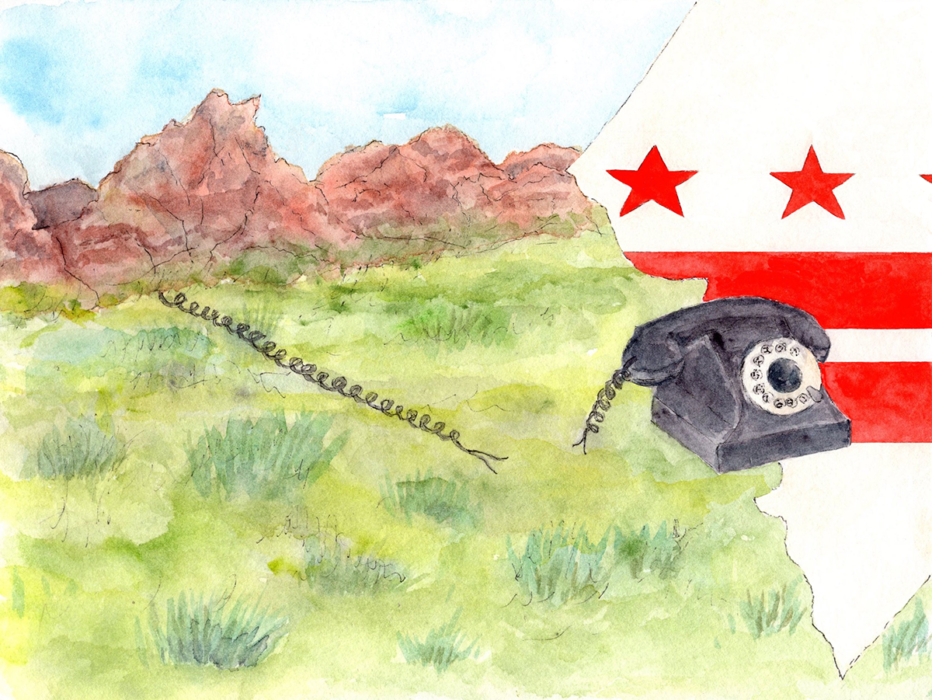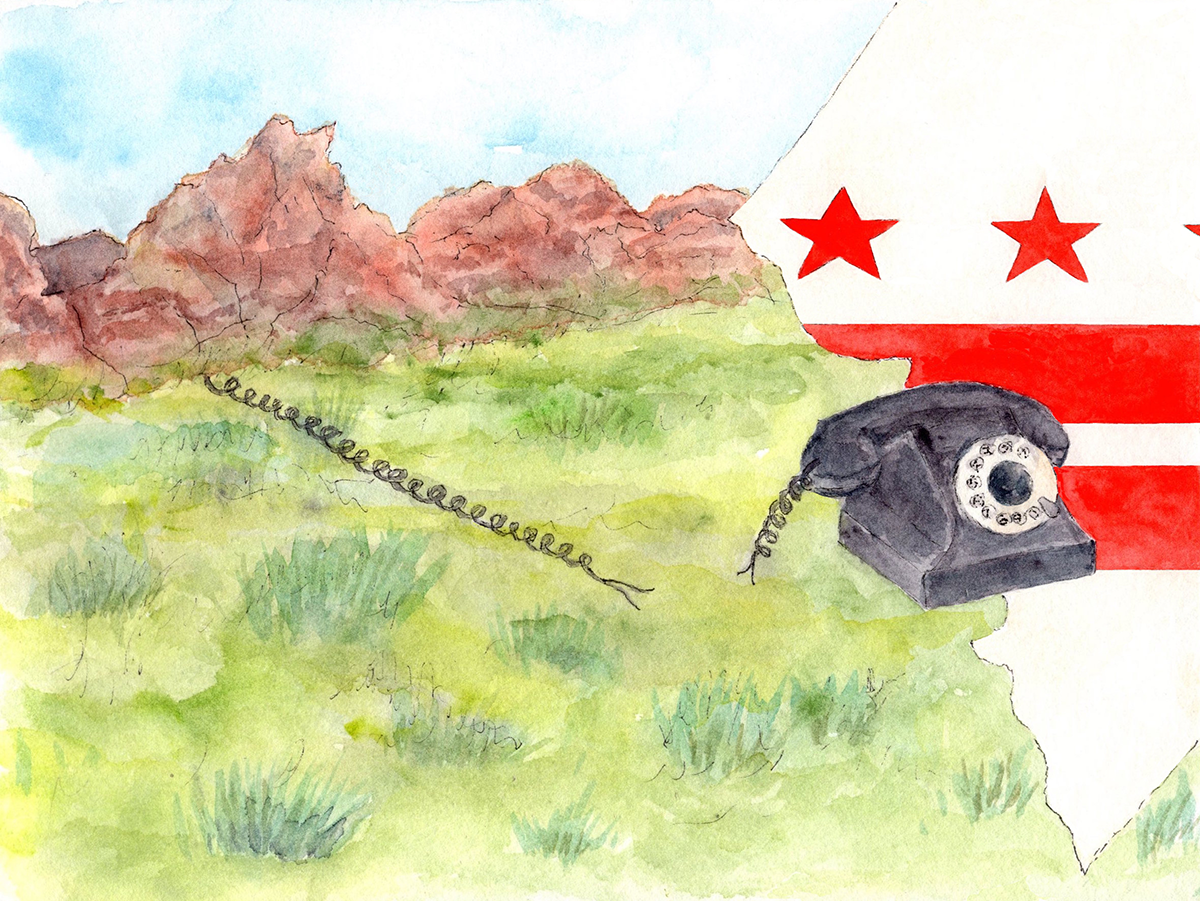
In 2015, Bureau of Land Management staff in Colorado had a problem: Guffey Gorge in South Park County, a two-hour drive from Denver, was becoming a hot spot for the worrisome combination of cliff diving, crowds, and alcohol consumption. With more than 20,000 people swimming each summer at the cove of golden boulders bisected by a tiny waterfall, litter and erosion were also concerns. So the BLM turned to its Rocky Mountain resource advisory council, or RAC — a 15-person volunteer board of public lands users — for advice. The council weighed in on options. By 2018, the BLM added tighter rules on parking, noise, dogs, alcohol, and a $6 day-use fee.
It was one of the projects that, to Scott Braden, then a member of the Rocky Mountain RAC, showed the purpose these councils serve. A public lands conservation advocate, Braden’s council — as with the 36 others around the West, where the bulk of the BLM’s 245 million acres lie — was comprised of various public land users: ranchers, energy company representatives, local government officials, wildlife organization members, environmental groups, dispersed recreation advocates, off-road vehicle users, academic institutions, and tribes.
“We felt like all of our voices were valid and we felt that the BLM staff in particular were really accessible to us,” Braden, now a stay-at-home dad who hikes with his infant daughter on BLM land almost daily, said. “And it felt like that began to change right after the election as the new administration began to take shape.”
Under the Trump administration, many of these councils have seen attrition in membership. Some members say the Department of Interior isn’t processing applications. Certain councils have gone a year or more without meeting. Many have seen their charters revised to prioritize this administration’s goals. BLM acting director William Perry Pendley has framed the decision to relocate the agency’s headquarters to Grand Junction, Colorado, as one predicated on more local guidance in overseeing public lands. But to those involved in RACs, the sentiment is disingenuous.
“I think that’s a smokescreen,” Braden said. “I would argue, if they cared about public input, they wouldn’t have spent three years hamstringing the RACs and cutting public comment periods at every opportunity.”
BLM staff did not respond to an interview request for this story.
Resource advisory councils give BLM the chance to run issues by a diverse and engaged set of stakeholders. Some councils have small grants to distribute. Some develop programs to add recreation options or manage wild horse populations. They routinely help BLM staff draft resource management plans, which shape choices like where to add trails and where to lease oil and gas drilling rights.
“Public involvement is really critical, particularly at a local level,” said Ed Shepard, president of the Public Lands Foundation, a national membership organization of former BLM employees. “Folks that know those lands, that work on those lands, that are dependent on those lands for their livelihoods or places to play need to come together — and that’s the benefit of RACs.”
Braden, a former Conservation Colorado employee, represented environmental interests on his council from 2015 to 2018; now, he said, few environmental groups are represented in Colorado RACs. That said, few groups of any stripe are on the councils: Just two of 15 spots on the Rocky Mountain council he served on are filled, and both terms expire in December. It’s effectively gone.
Shortly after he became Secretary of the Interior, Ryan Zinke blocked resource advisory councils from meeting for most of 2017. An analysis by the Center for Western Priorities prompted by an inquiry for this story found that 17 of 37 resource advisory committees have not met since Zinke reissued their charters.
“It just adds to their long track record of disregarding public input,” said Jesse Prentice-Dunn, policy director at the Center for Western Priorities. “We’ve seen that time and again. This is pretty egregious, but it’s not alone.”
A review like the one Zinke undertook of the RACs isn’t “confined to this administration,” said Shepard, with the Public Lands Foundation, “but it seems to happen frequently in this administration.”
Shepard has watched as documents crafted through years of public input, like National Environmental Policy Act reviews and BLM resource management plans, have been recalled by the Washington, D.C., office for further examination.
“They say they want more local decision-making, yet it’s being pulled back to Washington,” he said.
Testifying before Congress in September, Pendley said “there is no substitute for being on the ground to see the land and know its people, and to develop a sense of the local impacts of BLM’s decisions in a deeper and more meaningful way than one can do as a visitor.” But in an interview with Bloomberg this month, Pendley clarified that certain land management decisions, particularly those that fall under the National Environmental Policy Act, should be made by top-level officials in Washington, D.C.
When Boise State University professor John Freemuth testified to the House Committee on Natural Resources about the proposed BLM headquarters relocation, he pointed out the agency’s “apparent disconnect between the desire to move decisions to a more ‘local’ level,” and its handling of these councils. Later, in a phone call with Bitterroot, he added that the face-to-face discussion that occurs on the councils “promotes what I call practicing democracy. It allows the BLM to learn from people.”
Ashley Korenblat runs the nonprofit Public Land Solutions, which works with communities pivoting from resource extraction to recreation, and previously served on Utah’s statewide RAC. She said council meetings were a way to get past entrenched ideas to find solutions that work best on the ground. Near Moab, Utah, for instance, mountain biking trails weave through parcels of red rock desert that oil and gas companies have expressed interest in leasing. Korenblat, also the CEO of a cycling travel company, said that if representatives from each of those interests sit down and hammer out the details, they can usually find compromises.
“You can actually get to the facts, and not the philosophy,” she said. “When you do that homework, it sort of becomes obvious to everyone that we’re going to drill for oil here, because that’s where [the oil] is … or we’re going to build a bike trail here, because it’s connected to another trailhead and a reasonable distance to the front country.”
But many councils have seen their charters, which directs them on what to do and how to do it, revised to prioritize Trump administration goals. Thirty councils have seen “politically charged” language added to their charters, according to the Center for Western Priorities analysis. Once-brief charters allowing a good deal of autonomy have been revised to direct members to expand opportunities for outdoor recreation, hunting, and energy infrastructure; identify regulations to repeal or replace, particularly those that impede jobs; and support oil and gas development.
“What we’ve heard is that these councils are having a hard time finding people to sit on them — they’re having a hard time essentially getting buy-in to operate under this new kind of rubber stamp of a charter,” Prentice-Dunn said.
“Rather than just bring our expertise to bear and supporting or representing the communities we were there to support, it was like, ‘No, you’re here to support the priorities of this administration,’” Braden said. Citing that perceived politicization, Braden didn’t seek reappointment once his term ended in 2018.
Braden worries that BLM’s renewed emphasis on extractive industries and a relocation that could leave the organization in disarray puts the entire agency at risk.
“Individual management decisions can be revisited and changed. That doesn’t worry me as much as cultural changes to organizations like the BLM,” Braden said. “Especially scattering the BLM Washington office to the four winds — I think that’s going to be hard to put back together. And to the extent that they’re the stewards of our public lands inheritance, I think we all lose.”

